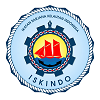Online Submissions
Already have a Username/Password for Jurnal Kelautan: Indonesian Journal of Marine Science and Technology?
Go to Login
Need a Username/Password?
Go to Registration
Registration and login are required to submit items online and to check the status of current submissions.
Submission Preparation Checklist
As part of the submission process, authors are required to check off their submission's compliance with all of the following items, and submissions may be returned to authors that do not adhere to these guidelines.
Authors submitting a manuscript do so on the understanding that if accepted for publication, copyright of the article shall be assigned to Jurnal Kelautan, Indonesian Journal of Marine Science and Technology, Department of Marine Science, Trunojoyo University of Madura Indonesia.
The copyright transfer agreement and publishing ethical statement gives the Publisher the permission of the author(s) to publish the Work, and it empowers the Publisher to protect the Work against unauthorized use and to properly authorize dissemination of the Work by means of printed publications, offprints, reprints,electronic files, licensed photocopies, microform editions, translations, document delivery and secondary information sources such as abstracting, reviewing and indexing services, including converting the Work into machine readable form and storing it in electronic databases. It also gives the author(s) broad rights of fair use.
The copyright transfer agreement and publishing ethical statement should be filled with respect to article and be signed originally and sent to the Editorial Office in the form of original mail, or scanned document file (softcopy). The form can be downloaded here.
- The submission file is in OpenOffice, Microsoft Word, RTF, or WordPerfect document file format.
- Where available, URLs for the references have been provided.
- The text is double-spaced; uses a 10-point arial font; employs italics, rather than underlining (except with URL addresses); and all illustrations, figures, and tables are placed within the text at the appropriate points, rather than at the end.
- The text adheres to the stylistic and bibliographic requirements outlined in the Author Guidelines, which is found in About the Journal.
- If submitting to a peer-reviewed section of the journal, the instructions in Ensuring a Blind Review have been followed.
- Submit at least 3 Names (Complete Name, Institution, Expertise, Email address) as potential reviewer in the comment for the editor
- Add Phone Number (Whatapps Number) of the Corresponding author in the comment for the editor
Copyright Notice
Authors who publish with this journal agree to the following terms:
- Authors retain copyright and grant the journal right of first publication with the work simultaneously licensed under a Creative Commons Attribution License that allows others to share the work with an acknowledgement of the work's authorship and initial publication in this journal.
- Authors are able to enter into separate, additional contractual arrangements for the non-exclusive distribution of the journal's published version of the work (e.g., post it to an institutional repository or publish it in a book), with an acknowledgement of its initial publication in this journal.
- Authors are permitted and encouraged to post their work online (e.g., in institutional repositories or on their website) prior to and during the submission process, as it can lead to productive exchanges, as well as earlier and greater citation of published work (See The Effect of Open Access).
Privacy Statement
The names and email addresses entered in this journal site will be used exclusively for the stated purposes of this journal and will not be made available for any other purpose or to any other party.














